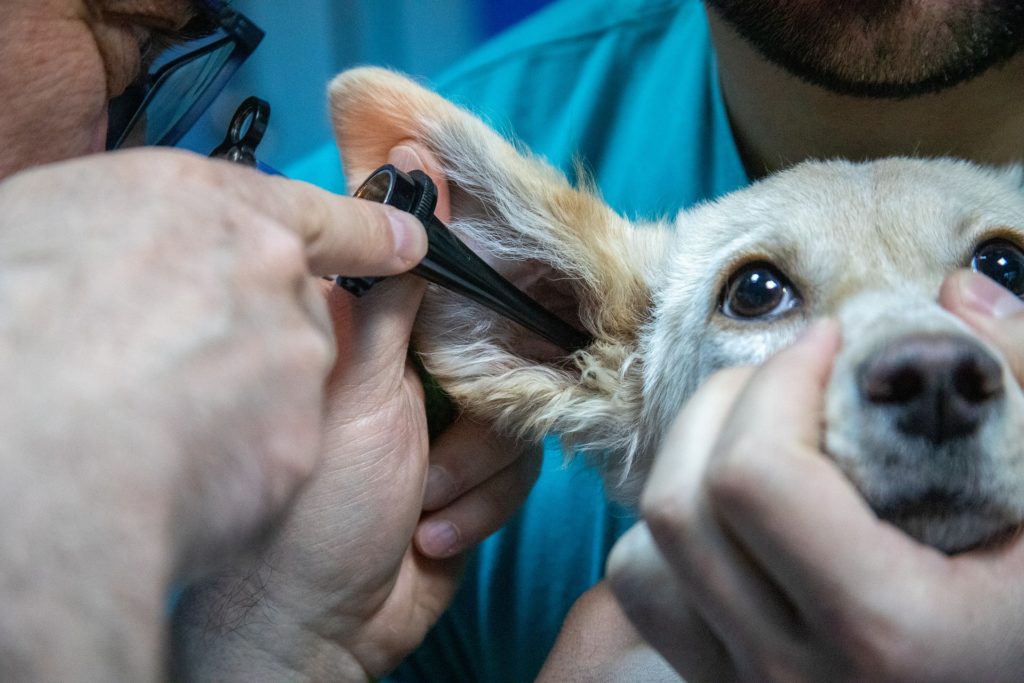Fleas are the most common external parasites found on dogs. They suck the blood of our canine buddies, cause skin irritation and even infection. It’s even worse if our pets are sensitive. But it’s a good thing that flea prevention is still possible for sensitive dogs. Here are our flea prevention tips for sensitive dogs.
Why you should get rid of fleas
Fleas are parasites. They are never good for your dogs and you need to get rid of them. These nasty little bloodsuckers can irritate the skin of your dogs: your pet can then scratch the flea bites and the bites can become infected. Infections can be prevented by making sure your dogs are flea-free.
Also, fleas are not very picky when choosing their victims. They can bite humans too and put you and your family at risk of skin irritations and infections. They can also live outside of their host dogs and can be closer than you think. These pests can set up camp in dog litter boxes and even your mattresses.
Why you should be mindful of your flea control methods
Flea prevention can be tricky because some dogs are sensitive. They experience various side effects from the usual flea control methods, such as flea collars. The best way to get rid of fleas is to consult a veterinarian. They will be able to assess your dog’s condition and recommend the appropriate treatment.
But if you want to treat your dog’s fleas on your own, here are some issues you should look out for.
- Digestion problems. Some flea treatments are taken orally, and they usually present fewer problems compared to those applied topically. But they can still have negative side effects. Sensitive dogs can experience abdominal cramps, bloating, diarrhea, and vomiting.
- Neurological problems. Flea treatments in the isoxazoline class can cause neurological problems, such as ataxia, muscle tremors, and seizures. The FDA is aware of the issue. But remember that these treatments are still FDA-approved, so they are safe. It’s just that a small number of dogs react to them negatively.
- Skin problems. Among all flea treatments, those applied topically cause the most problems. These are the treatments you apply directly on your dog’s coat and skin, so it’s easy to see how sensitive dogs can have negative reactions. They can experience burning, irritation, itching, and redness.

Flea prevention for sensitive dogs
Even if you consult a veterinarian, your sensitive dog may still experience some of the problems mentioned above. But having the backing of a veterinarian will make it easier to deal with the situation. And the medical professional can always just change their recommended flea treatment.
The important thing is to observe your dog, and be on the lookout for digestion, neurological, and skin problems. Also be on the lookout for sudden behavioral changes, like agitation and social withdrawal.
Here are some flea prevention methods you can try for sensitive dogs.
1. Apply spot-on treatments
Sure, spot-on treatments are topically applied, so there is the risk of causing skin problems like contact dermatitis, paresthesia, and irritation. But this doesn’t change the fact that spot-on treatments are some of the most effective flea prevention methods today even for sensitive dogs.
This is where veterinarian consultations and your keen observance are highlighted once again. With the help of a veterinarian, you can make sure that the spot-on treatments are effective and less risky. With your keen observation, you can make sure that your dog is not sensitive to the treatments.
2. Give them chewable tablets
There are so many advantages of using chewable tablets. They are not applied topically, so you don’t have to worry if your dog has sensitive skin. They cannot be removed easily, so you can rest assured that your dog won’t be able to brush them off, unlike common treatments like flea powders. You can also hide and mix tablets in your dog’s food – which is particularly helpful for dogs that won’t take pills.
But like spot-on treatments, chewable tablets still have risks. Observe your pet for signs of digestive problems like diarrhea and vomiting.
3. Wash them with a natural spray
Natural sprays are great because they don’t contain the harmful chemicals found in spot-on treatments. These sprays rely on natural agents that repel or kill fleas. The good news is that they do work. But the bad news is that their effectiveness is mild at best. If the flea infestation is severe, other methods may be needed.
One of the most common natural sprays is lemon spray. Simply boil lemon slices in water and let them steep overnight. Put the lemon water in a spray bottle and spray your dog twice a day. Be on the lookout for negative reactions, especially if your dog has open wounds. Lemon water can sting when it gets into contact with membranes and wounds.

4. Give them a healthy diet
No, a healthy diet won’t prevent or kill fleas. But it will help your dog’s battle against these parasites. When you partner a healthy diet with an effective flea treatment, they can be a formidable force that could get rid of the parasites swiftly.
A healthy diet is particularly great for your dog’s skin and immune system. When you are looking for dog foods, look for ones that contain antioxidants and omega fatty acids. Antioxidants help protect your dog from body damage and omega fatty acids can help ease inflammation.
Feeding your dog unique protein sources like bison or venison can also decrease your dog’s chances of allergic reactions, which can happen during flea treatments.
5. Get rid of the fleas on your home
You can get rid of the fleas on your sensitive dog. But the effort will be wasted if your dog will only get fleas again because you have fleas on your property. You should make your home flea-free to make treating your dog worthwhile.
Clean your home regularly to prevent fleas from thriving. This includes constant vacuuming inside your home and trimming of grass outside your home. This is because fleas thrive really well on beds, carpets, and grasses. There are also natural solutions, such as the scattering of beneficial nematodes on the soil of your garden, lawn, and yard.

